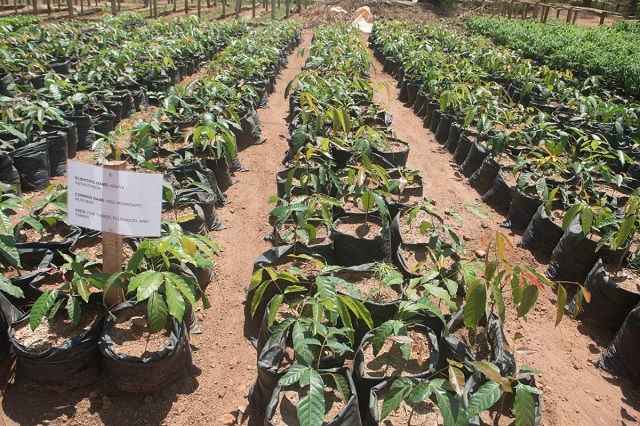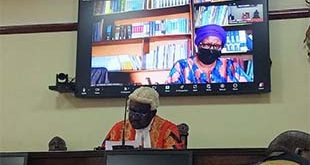
Kampala, Uganda | THE INDEPENDENT | The National Water and Sewerage Corporation has integrated tree planting to water treatment to improve declining water qualities around the country.
The agency hopes the indigenous trees being planted around the water abstraction sources will naturally absorb some of the pollutants from agriculture, environment and mining sectors trickling into the sources.
There are 253 treatment plants spread across the country. Some of them draw raw water from underground aquifers while others take water from surface water in wetlands, valley dam reservoirs and Lakes.
Sam Apedel, the Spokesperson of Uganda National Water and Sewerage Corporation, says that they are more interested in protecting the surface water sources from accumulation of excessive pollution. He says they have so far planted 1 Million indigenous trees in some of the main water sources feeding Gaba, Arua, Gulu and Mbarara treatment plants.
“In Mbale district, we are partnering with World Bank to re-grow wetland vegetation at the water abstraction station there” he stated adding that in Katosi water abstraction source in Mukono, the agency planted 180,000 indigenous trees which were recommended by the National Forestry Authority (NFA) to thrive in the area last year.
The agency is working with Water, Sanitation and Health Clubs in 400 Primary and Secondary schools to grow trees on school lands, individual lands and communities with seedlings also provided by the National Forestry Authority.
According to Apedel says most water sources are getting polluted as Climate Change pushes farmers to cultivate crops upstream, along river banks and in swamps and wetlands serving as water abstraction centres. He says they believe that the trees will build resilience to drought by efficiently moderating the micro climate of the sources and keep them welling up with freshness of life in continuous rainfall formation cycles.
In Bushenyi, Water is planning to rehabilitate the wetland around the water abstraction station to improve natural water filtration. According to Ministry of Water and Environment joint Sector Review report for 2018, wetlands are more effective in natural filtration compared to forests. The report says approximately 3,240 Hectares of wetlands have been restored, and 2160 Hectares of degraded forests replanted with trees.
Sam Cheptoris, the Minister for Water and Environment says pollution from agriculture, environment and mining sector has lowered the total average compliance to National Water Abstraction Quality standards from 77 percent in last quarterly sampling of 2018 to 35 percent in the last quarter sampling for 2019. The average World Health Organization standard is 97 percent.
Apedel says despite increasing water pollution happening in Uganda, the water pumped bu the agency is quite safe for domestic use unless contaminated by storage tanks, poor plumbing materials, a break in the network or handling. He says compliance to WHO standard and those set by the Uganda National Bureau of Standards is the sole reason why Kampala has not had an epidemic of Cholera for a long time.
The standard is measured in terms of the presence of microbiological contamination, physical properties such as colour appearance, turbidity, Chlorine residues, the acidity or alkalinity of the water, electrical conductivity and hardness.
In August this year, Uganda National Association of Community and Occupational Health – UNACOH released reports of a yearlong field study conducted in 18 districts of Uganda indicating excessive accumulation of harmful pesticides in major community water sources.
Releasing the report, Dr Deogratius Ssekimpi, the Executive Director of Uganda National Association of Community and Occupational Health-UNACOH, says the scientific analysis found that the pollution assumed a seasonal trend which peaks around June as farmers began harvesting their produce.
*****
URN
 The Independent Uganda: You get the Truth we Pay the Price
The Independent Uganda: You get the Truth we Pay the Price


